Gatehouse into Dachau prison compound 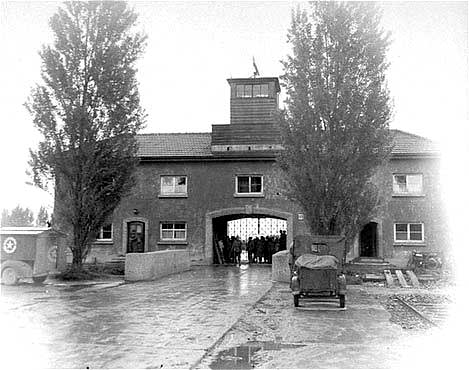 The color photograph at the top of this page, taken in May 2007, shows the road up to the Dachau prison compound gatehouse, which was paved with bricks, as seen in the old black and white photo above. The 2007 color photo shows a section of the brick-paved road that was uncovered in 2005. Note the grass-covered mound on the left side of the color photo; this is the rubble from factory buildings which were torn down in the 1980s. The old black and white photo immediately above shows the gatehouse as it looked shortly after the camp was liberated on April 29, 1945. The gatehouse is original, not a reconstruction, but a comparison of the two photos above indicates that the original roof of the tower has been replaced. Note the two poplar trees on either side of the gate. When the camp was in operation, there was a line of poplar trees on both sides of the road up to the gatehouse. These trees are now gone, but other trees have grown up, which now obscure one side of the gatehouse. On the right, in the old photo above, you can see the remains of a narrow gauge railroad track which ended a few feet from the gatehouse. A section of these tracks remain today and can still be seen a few yards away from the gatehouse. The photo below shows the narrow gauge railroad tracks which parallel the road to the Dachau prison compound gatehouse. These tracks were not used for trains to bring the prisoners to the gatehouse. The incoming prisoners had to walk from the train station in Dachau to the camp. 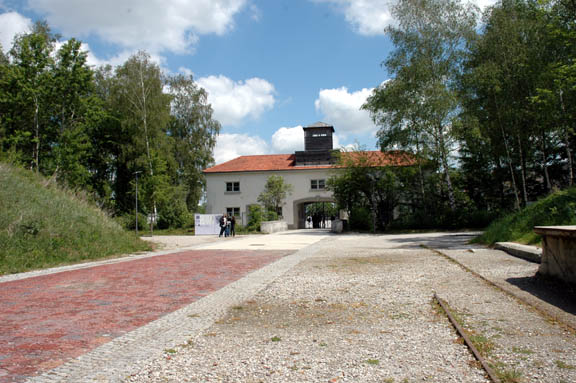 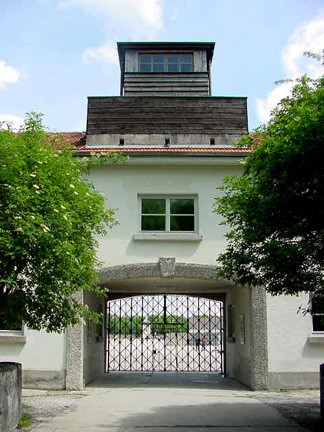 The photograph above, taken in May 2003, shows the entrance into the Dachau prison compound through the "Arbeit Macht Frei" gate before the roof was replaced. In 2003, a high wall across the end of the short bridge over the Würm river canal, which is behind the camera in this shot, prevented tourists from seeing the location of the entrance road, which was covered with rubble at that time. The SS garrison at Dachau, along with the gatehouse, was used by the American military for 28 years after the camp was liberated. 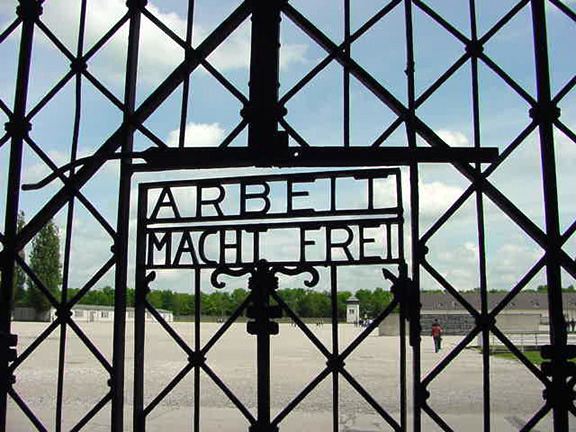 The iron gate at the entrance through the gatehouse into the prison compound, shown in the photo above, is the original gate, which was built by a prisoner named Karl Röder. The sign which reads "Arbeit Macht Frei" was removed soon after the camp was liberated, but it was reconstructed in 1965 at the same time that two barrack buildings were reconstructed for visitors. One of the reconstructed barracks can be seen on the left side of the photo above. The slogan "Arbeit Macht Frei" was allegedly coined by Propaganda Minister Josef Goebbels in an effort to convince the public that the Nazi concentration camps were merely work camps designed to politically rehabilitate Communists, Social Democrats and anarchists. This slogan was first used over the gate of a "wild camp" in the city of Oranienburg which was set up in an abandoned brewery in March 1933 during the time that the first political prisoners were being held for an indefinite period without charges in a number of places in Germany. In 1936, the Oranienburg camp was rebuilt as the Sachsenhausen camp. The Dachau camp was also rebuilt, starting in 1936. The gatehouse at Sachsenhausen also bears this inscription, but the third major German concentration camp, Buchenwald, has a sign on the gate that reads "Jedem das Seine," which means To Each his Own. Buchenwald was a Class II camp, while Dachau and Sachsenhausen were Class I camps for offenders who were considered capable of being rehabilitated and who were eligible for possible release. Rudolf Höss, who trained at Dachau and then served as an adjutant at Sachsenhausen before becoming the first Commandant at Auschwitz, used this motto over the gate into the main camp, Auschwitz I, which was classified as a Class I camp for political prisoners. (Auschwitz II, also known as Birkenau, was not a Class I camp. Birkenau did not have this slogan over the gatehouse.) Mauthausen and Gusen in Austria were the only Class III camps, where prisoners, who were considered beyond rehabilitation, were treated very harshly. These classifications went into effect on January 1, 1941. Two other Nazi concentration camps which used the slogan "Arbeit Macht Frei" on their gate houses were Flossenbürg and Gross-Rosen. This slogan also appeared on a gate inside the Gestapo prison in the Small Fortress at Terezin, formerly known as Theresienstadt. Inside the gatehouse are two plaques in honor of the soldiers in the U.S. Seventh Army who liberated the camp on April 29, 1945. 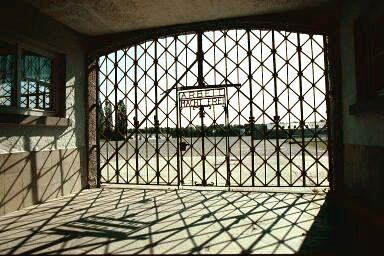 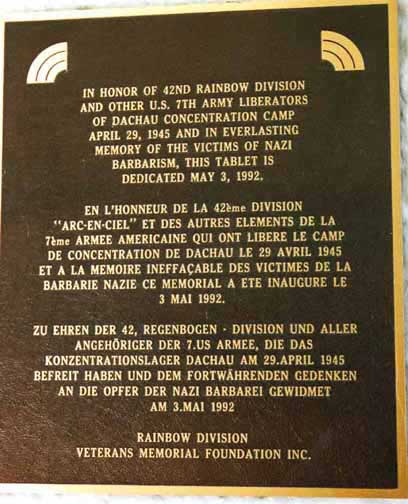 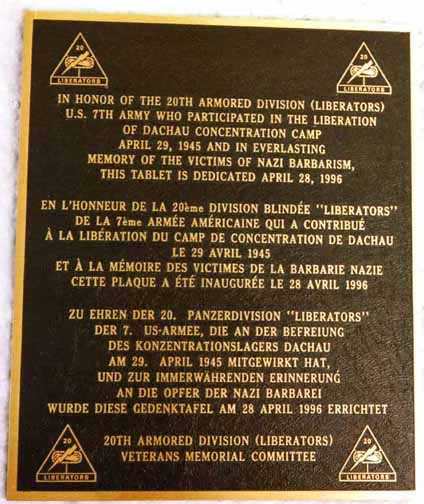 The 45th Thunderbird Infantry Division also participated in the liberation of the Dachau camp, but they declined to have a plaque in their honor. The 45th Division was involved in what has become known as the Dachau massacre. ContinueBack to Dachau Concentration CampBack to Table of ContentsBack to Dachau indexHomeThis page was last updated on October 5, 2009 |